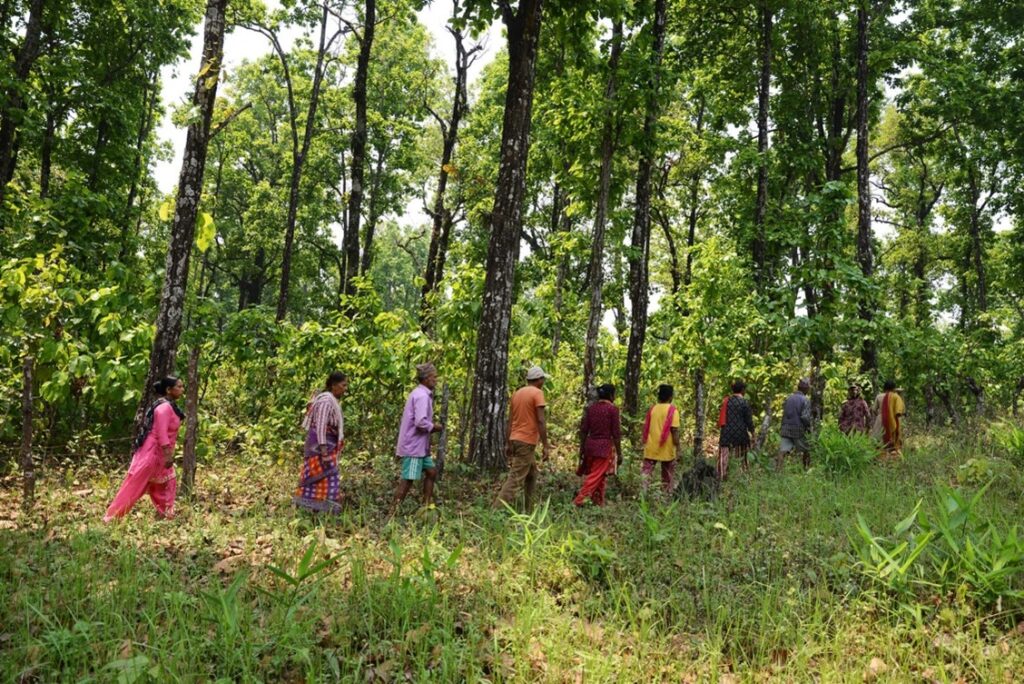
By Srivatsan Senthilkumar, S25 Environmental Clinic Student
Indigenous Peoples, while being significantly impacted by climate change and environmental harms, also play a critical role in environmental protection. Indigenous groups suffer disproportionately from biological diversity loss and environmental degradation, as many members engage in subsistence lifestyles and maintain spiritual and cultural connections to lands and territories. At the same time, indigenous sustainable land practices protect forests and biodiversity worldwide and build resilience to natural disasters. Indigenous Peoples and communities worldwide steward approximately 50% of the world’s land, but only possess legal rights to around one-fifth of such land. Research strongly suggests that awarding “land title” or other formal legal recognition of land rights to indigenous communities can protect forests in the short term.
Studies show Indigenous lands contain some of the healthiest forests. A recent study shows that indigenous territories with secure land rights in the Brazilian Amazon have reduced deforestation and higher secondary growth in previously deforested areas, as compared to other areas of the country. Studies by Monitoring of the Andes Amazon Program (MAAP) indicate that between 2017 and 2021, Indigenous forests in the Brazilian Amazon had a lower primary forest loss rate (1.4%) than areas protected by States or departments. Studies in Australia, Brazil, and Canada found that vertebrate biodiversity on Indigenous-managed lands was equal to, or higher than, biodiversity within protected areas. Analysis reveals that Indigenous Peoples and local communities manage about 300,000 million metric tons of carbon in their trees and soil.
International Courts and Adjudicatory bodies have recently increasingly recognized Indigenous and local communities’ rights to their local land. In Awas Tingni Community v. Nicaragua, the Inter-American Court on Human Rights recognized the property rights of Indigenous community lands in Nicaragua. The court held that Nicaragua had an obligation to legally recognize the Awas Tingni community’s rights to land and natural resources, and to address and prevent illegal private lumbering in these Indigenous territories, as well as other accompanying human rights violations.
In CEMIRIDE v Kenya, nongovernmental organizations brought a complaint against Kenya to the African Court of Human and People’s Rights on behalf of the Endorois for alleged violations of rights to religion, property, culture, and natural resources. The Endorois consider themselves a distinct people with a common history, culture, and religion “intimately intertwined with their ancestral lands” of the Lake Bogoria area. Kenya evicted the Endorois from their ancestral lands to create a game reserve and violated the Endorois’ right to collective property. This prevented the community from engaging in their pastoral way of life, using traditional ceremonial and religious sites, and accessing natural resources. The court held that Kenya had an obligation to protect the Enderois’ collective right to property but instead had severely encroached on it. It pointed to the State’s failure to conduct itself in accordance with “interest of public need,” or consult with the community.
Similarly, a Peruvian court recently recognized the comprehensive land rights of the Mashunta, Vencedor, and part of the Siekopai nations. The Siekopai have also recently gained land title in Ecuador to sections of the Amazon rainforest.
While local courts and governments have also recognized Indigenous and local communities’ rights to land, more recognition and efforts beyond recognition are needed. Court rulings are not always implemented, new laws may nullify those rulings, and there is frequent pushback from commercial interests. Increasing legal recognition must be accompanied by grassroots organizing and empowerment, direct funding, political leadership, and accountability.
References:
Amazon Frontlines, Landmark Victory for Indigenous Rights: Peru’s Court Orders Full Recognition of Ancestral Lands (Dec. 2024).
Amazon Frontlines, Ecuador’s Siekopai Nation Wins Historic Land Back Victory in the Amazon Rainforest (Nov. 2023).
Amnesty International, Indigenous Peoples’ Rights
Climateworks, Securing Land Rights to Protect Forests and the Climate (Jan. 2024)
Mongabay, Land Titling For Indigenous Communities Leads To Forest Protection, Peer-Reviewed Study Finds (April 2017)
Mongabay, Indigenous Land Rights Key To Curbing Deforestation And Restoring Lands: Study (June 2023)
Monitoring of the Andes Amazon Program, MAAP #183: Protected Areas & Indigenous Territories Effective Against Deforestation Across Amazon (March 2023).
Oxfam, International Land Coalition, Rights and Resources Initiative, Common Ground: Securing Land Rights and Safeguarding the Earth (March 2016).
rights and resources initiative, New Analysis Reveals that Indigenous Peoples and Local Communities Manage 300,000 Million Metric Tons of Carbon in Their Trees And Soil (Sept. 2018).
UN Environment Programme, Indigenous Peoples and the Nature They Protect (Sept. 2023)
World Resources Institute, Indigenous and Local Community Land Rights Protect Biodiversity (Nov. 2024)
InterAmerican Court of Human Rights, Case of the Mayagna (Sumo) Awas Tingni Community v. Nicaragua, (Aug. 31, 2001)
African Court on Human and Peoples’ Rights, CEMIRIDE on behalf of the Endorois Community et. al. v Kenya (February 4, 2010).
